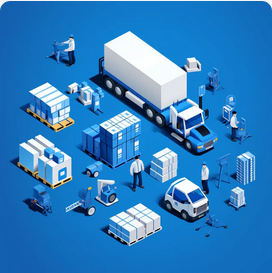How to Start a Resale Liquidation Business in 2023
Starting a resale liquidation business can be a lucrative venture, especially in 2023 as the market for discounted products continues to grow. If you’re considering diving into this industry, here’s a guide to help you get started.
Step 1: Research the Market
Before you begin, it’s crucial to understand the resale liquidation market. Identify the types of products that are in high demand. Popular categories often include electronics, apparel, and home goods. Use online resources, industry reports, and competitor analysis to gauge the market dynamics.
Step 2: Create a Business Plan
A solid business plan will serve as your roadmap. Outline your business model, target audience, sourcing strategy, pricing, and marketing plan. Include financial projections and a budget to ensure you have a clear understanding of your startup costs and potential revenue.
Step 3: Legal Considerations
Register your business with the appropriate local and federal authorities. Choose a business structure (sole proprietorship, LLC, corporation, etc.) that suits your needs. Obtain any necessary licenses and permits, and make sure to understand the tax obligations for your business.
Step 4: Source Inventory
The heart of a resale liquidation business is sourcing inventory. Establish relationships with wholesalers, manufacturers, and liquidation companies. Attend trade shows, auctions, and online liquidation platforms to find high-quality products at discounted prices.
Step 5: Storage and Logistics
Determine how you will store your inventory. Renting a warehouse or storage unit can be beneficial if you have large quantities of stock. Ensure you have a reliable logistics plan for shipping products to your customers efficiently.
Step 6: Set Up an Online Presence
In today’s digital age, having an online presence is crucial. Create a professional website with e-commerce capabilities. Utilize online marketplaces like eBay, Amazon, and Facebook Marketplace to reach a broader audience. Optimize your site for search engines (SEO) to attract organic traffic.
Step 7: Marketing and Promotion
Develop a marketing strategy to promote your business. Use social media platforms, email marketing, and pay-per-click advertising to reach potential customers. Offer promotions and discounts to attract initial buyers and encourage repeat business.
Step 8: Customer Service
Excellent customer service can set you apart from competitors. Respond promptly to inquiries, handle returns and complaints professionally, and strive to exceed customer expectations. Positive reviews and word-of-mouth recommendations are invaluable.
Step 9: Monitor and Adapt
Regularly review your business performance. Use analytics tools to track sales, customer behavior, and inventory levels. Be prepared to adapt your strategies based on market trends and customer feedback.
Step 10: Scale Your Business
As your business grows, consider expanding your product range, exploring new markets, or even opening a physical store. Continuously seek opportunities for growth and improvement.
Starting a resale liquidation business in 2023 requires careful planning, dedication, and a keen understanding of the market. By following these steps, you’ll be well on your way to building a successful and profitable business.




